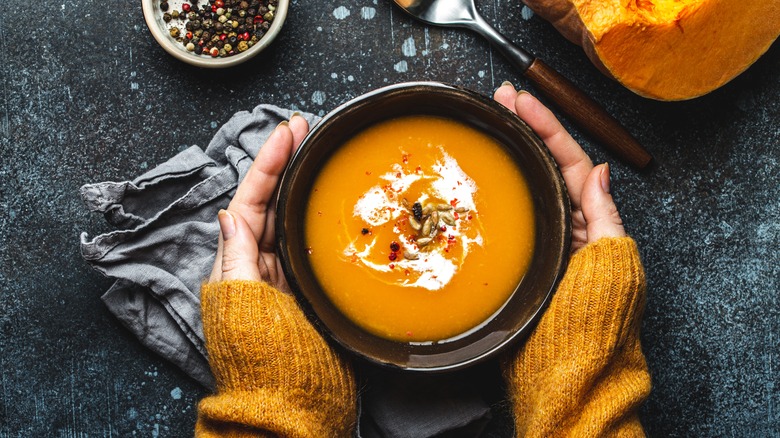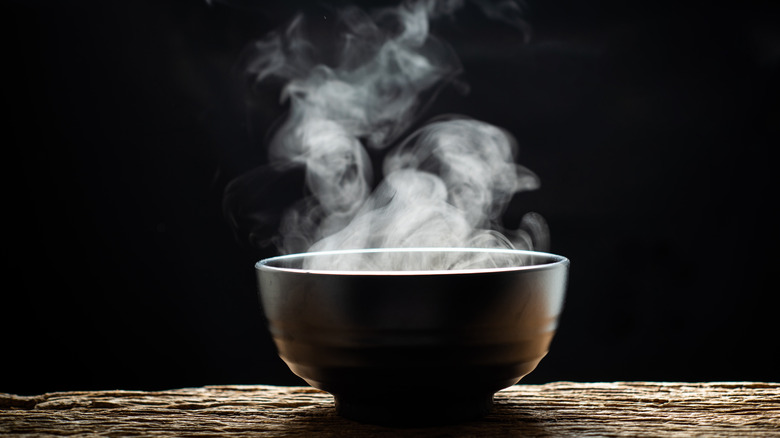Why You Should Consider Preheating Your Soup Bowls
When you're out for dinner at a Mexican restaurant and those sizzling enchiladas arrive at your table — and the plate is as hot as the stovetop — it didn't happen accidentally. Heating dinner plates is a common industry practice that can elevate your enjoyment of a meal. It's also an easy practice to replicate in your own kitchen — and few meals could benefit from a warmed dish like soup.
The last thing you want when enjoying a cozy bowl of chicken noodle is to rush through it before it gets cold, and what you serve it in makes all the difference. Hot food cools off significantly the instant it touches a cold plate; it's a scientific process called conduction, and it can make or break your next batch of soup. According to professional kitchen knife purveyor Chef's Vision, warmed bowls help food retain its temperature for longer. That's especially important when a cold bowl could significantly impact your soup's texture. Paul Butler of Spoke Wine Bar in Massachusetts says cold dishes can cause certain ingredients to thicken up (via America's Test Kitchen), which isn't always ideal.
A heated dish will keep you enjoying your food at the perfect texture for longer, which is why some restaurants stack plates and bowls under heat lamps to warm them. Others use industrial-grade plate warmers specifically designed for this purpose. Odds are, neither appliance is living on your kitchen countertop right now, but there are several easy methods for preheating your soup bowls.
It's as easy as turning on the kettle or preheating the oven
Given the boost that a heated bowl can add to your soup and the ease of making it happen, preheating your dishes should be a no-brainer step to add to your food prep routine. One method is to preheat your oven to the lowest temperature setting — typically someplace around 200 degrees Fahrenheit — and leave the bowls inside for 10 minutes, per Bon Appétit. Alternatively, suggests Paul Butler (via America's Test Kitchen), you could pop those bowls in a regularly pre-heated oven (325-400 degrees) for 10-40 seconds. Or, if you're already cooking crusty focaccia in the oven to accompany your soup, simply placing those bowls on top of a heated oven should be enough to warm them through. (Either way, it's still a good idea to handle the bowls with an oven mitt, just in case.)
You could also consider filling your bowls with boiling water from a kettle a few minutes before serving, then dumping out the hot water and ladling your soup into those freshly-warmed bowls. In fact, using hot water might be the easiest way to warmed-up dishes. According to the UCAR Center for Science Education, the denser the material, the quicker the heat transfer via conduction. The molecular density of solids and liquids (i.e., ceramic dishes and water) is higher than in gas (i.e., ovens or heat lamps), making for a speedier heat transfer from hot water to plate than from hot air to plate.
Once your bowl is warmed, all that's left to do is ladle in your soup, cozy up, and enjoy.

